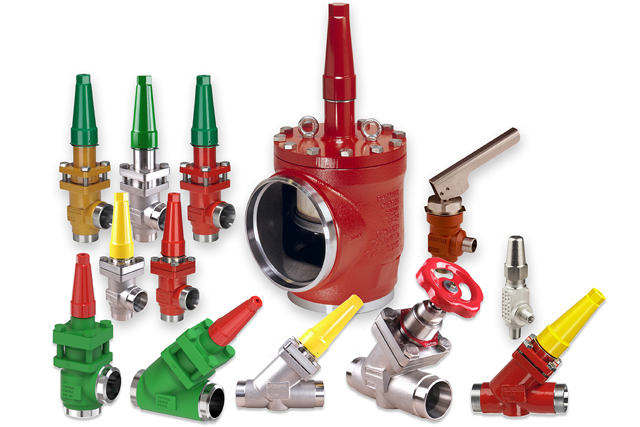Creating the foundation for a long-lasting product
SVL is the family name of the Manual Valves line covering the 5 functions Stop Valve 'SVA', Regulating Valve 'REG', Filter 'FIA', Check Valve 'CHV' and Stop-Check Valve 'SCA'. Danfoss first introduced industrial refrigeration valves in the 1950s, yet the true groundwork for the SVL product line as it’s known today was laid in 2000.
“At that point in time, we had 50 years of experience that we could use to build a new platform for industrial valves,” relates Torben Hertel, SVL Product Manager, Manual Valves at Danfoss. “We wanted to create a flexible design that could support the different directions in which the industrial refrigeration market could evolve. And we’ve spent the past 25 years refining that design with innovative solutions. The core product is the same, but we’ve been able to adapt it to meet new requirements along the way.”
According to Torben, the fact that Danfoss produces all SVL valves in its own facilities has played a key role in the portfolio’s success. “We know how important quality is to our customers,” he says. “By keeping production in-house, we control the entire quality assurance process, so we can guarantee that each valve meets our high standards.” Danfoss thoroughly tests valves before shipment, conducts durability tests in on-site or affiliate laboratories and carries out systematic field tests in real-world systems and installations. Additionally, all Danfoss production facilities follow industry standards, such as ISO 21922-2021, PED, CRN, BV and DNV.
Meeting the demands of transcritical systems
One of the changes impacting the SVL portfolio has been the increase in the scale of industrial refrigeration systems. To accommodate this shift, Danfoss introduced a new range of SVL valves approved for up to 65 bar in 2018, and up to 140 bar in 2022. These valves meet the requirements of transcritical CO₂ systems. As the size and scale of industrial refrigeration systems increases, so does the cost.
“Building a large-scale system is a considerable investment. So, in the system design phase, customers are looking for high quality valves that are serviceable and reliable,” Torben says. Here, the SVL portfolio’s flexibility proved to be a key advantage. “SVL valves are designed in a way that you can separate and service the valve. The packing gland is easy to replace, even while the valve is still under pressure. Our customers can also upgrade valve parts to scale the system to meet their changing requirements.”
Working with customers to address local needs
Over the years, Danfoss has worked with customers in different regions to ensure the SVL portfolio meets their specific needs. “At one point, we received feedback from our customers in Latin America and Asia that, due to the nature of their installations, dirt was infiltrating the sealing area and negatively impacting valve performance,” Torben recalls. “Our team worked on how we could improve the sealing design to ensure its reliability.” By adopting an angle sealing design and improving the sealing material and shape, the team could reduce the chances of dirt entering the seating area, as the design helps to flush dirt away from the valve seating and ensure an optimal performance. “Since we implemented the new design about four years ago, we’ve had zero issues involving dirt in the seating area. And the new design helps minimize the risk of leakage as well.”
Over the past 25 years, we’ve sold millions of SVL valves to customers in Europe, Asia and the Americas. As we work with them to meet their evolving requirements, we incorporate those changes into our global production, so they can benefit other customers as well. This results in a more robust and reliable valve that can keep performing in a variety of conditions. And we look forward to continuing that legacy of cooperation and innovation for the next 25 years and beyond.


